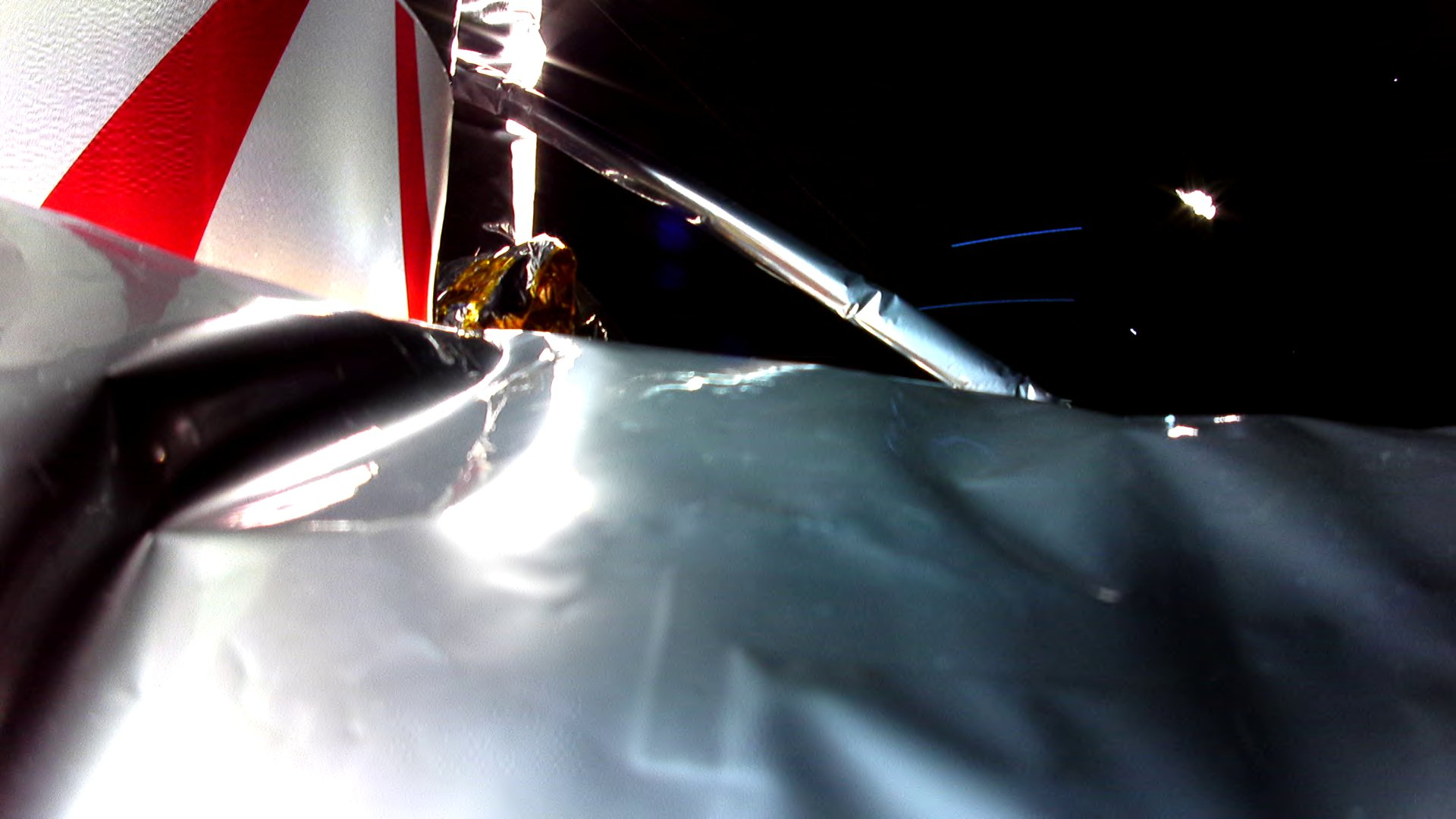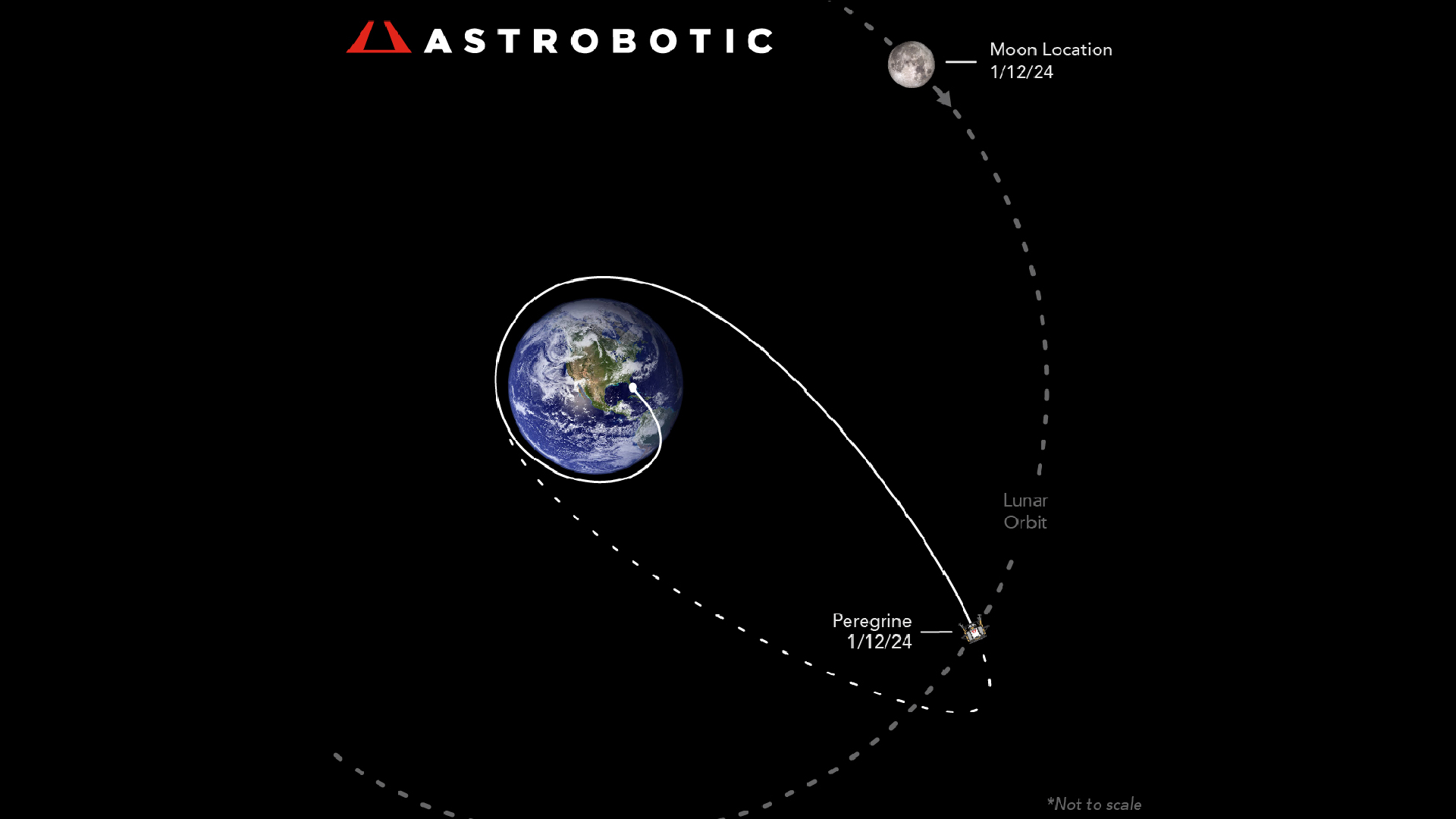Ailing Peregrine moon lander on path to crash into Earth, Astrobotic says
Peregrine will likely burn up in Earth's atmosphere, the moon lander's builder said.

The beleaguered private moon lander Peregrine, which suffered a fuel leak shortly after its launch last week, is now on a collision course with Earth, its builder said Saturday (Jan. 13).
Peregrine launched toward the moon on Jan. 8 atop a United Launch Alliance Vulcan Centaur rocket, but suffered a critical fuel leak shortly after separating from the booster. That loss of fuel doomed Peregrine's chances to soft-land on the moon next month, according to its builder Astrobotic. While the company has been fighting to keep the lander alive as long as possible, the probe's days are definitely numbered due to its trajectory, Astrobotic said.
"Our analysis efforts have been challenging due to the propellant leak, which have been adding uncertainty to predictions of the vehicle's trajectory," Astrobotic wrote in an update on X (formerly Twitter) on Saturday. "Our latest assessment now shows the spacecraft is on a path towards Earth, where it will likely burn up in Earth's atmosphere."
Astrobotic did not include an expected date for when Peregrine could slam into Earth's atmosphere, though the Pittsburgh-based company's engineers continue work to salvage the spacecraft.
"The team is currently assessing options and we will update as soon as we are able," Astrobotic wrote in the update. On Sunday, Peregrine was about 242,000 miles (389,000 kilometers) from Earth, just beyond the orbit of the moon, which circles Earth at about 238,000 miles (384,400 km).
Related: Private Peregrine moon lander failure won't stop NASA's ambitious commercial lunar program

Astrobotic's Peregrine lander is the first U.S. private moon lander ever to launch and the first to carry NASA experiments and commercial payloads to the moon, as well as the first mission to fly under NASA's Commercial Lunar Payloads Services program. It is carrying five NASA experiments and 15 other payloads for a variety of customers, including human remains intended for a moon burial for the companies Celestis and Elysium Space.
The Peregrine lander was slated to attempt its moon landing on Feb. 23, but the fuel leak made that impossible, Astrobotic said as the situation developed. In recent days, the leak has slowed, allowing engineers to extend its life.
Get the Space.com Newsletter
Breaking space news, the latest updates on rocket launches, skywatching events and more!
"The propellant leak has slowed considerably to a point where it is no longer the team's top priority," Astrobotic said in its update, adding that a soft moon landing was still not possible.
Astrobotic officials and NASA are expected to hold a press conference on Thursday (Jan. 18) to discuss the mission's status.
Join our Space Forums to keep talking space on the latest missions, night sky and more! And if you have a news tip, correction or comment, let us know at: community@space.com.

Tariq is the Editor-in-Chief of Space.com and joined the team in 2001, first as an intern and staff writer, and later as an editor. He covers human spaceflight, exploration and space science, as well as skywatching and entertainment. He became Space.com's Managing Editor in 2009 and Editor-in-Chief in 2019. Before joining Space.com, Tariq was a staff reporter for The Los Angeles Times covering education and city beats in La Habra, Fullerton and Huntington Beach. In October 2022, Tariq received the Harry Kolcum Award for excellence in space reporting from the National Space Club Florida Committee. He is also an Eagle Scout (yes, he has the Space Exploration merit badge) and went to Space Camp four times as a kid and a fifth time as an adult. He has journalism degrees from the University of Southern California and New York University. You can find Tariq at Space.com and as the co-host to the This Week In Space podcast with space historian Rod Pyle on the TWiT network. To see his latest project, you can follow Tariq on Twitter @tariqjmalik.
-
dbrower I would hope there are plans to do part of the lunar mission, with separation and lander operation until it burns up.Reply
Any flight test is better than none.
Did the accident preclude separation? -
AboveAndBeyond Any word on whether the spacecraft left earth orbit on what's called a free return trajectory, like the early Apollo missions to the moon (8 to 13, IIRC), which would bring it back to earth's vicinity if nothing else was done (i.e., if the engines failed to fire)? Or did it not even go into earth orbit?Reply









